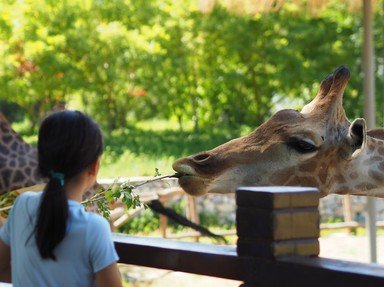Quiz Answer Key and Fun Facts
1. Let's start with a true creature of the night, the vampire bat. They don't drain blood like movie vampires. With sharp fangs they prick the skin of their prey and lick at the surface blood. Vampire bat saliva contains a special substance that stops prey's blood from clotting or drying. What is this substance called? (it has a fitting name)
2. Australian colonists nicknamed this marsupial "Beelzebub's pup" when they heard its shrill, angry screeching at night. The shrieks were even louder when a group of these animals ate together.
3. Many nocturnal creatures, such as the ones in this quiz, are crepuscular. What does crepuscular mean?
4. This large animal stays partially submerged under water during the day. It comes out of the water to graze at night on short green grasses.
5. The only bear in South America, this shy night-loving animal is an agile tree climber. It builds platforms made of leaves and forest brush way up in the trees of the Andes Mountains. It sleeps in its cozy tree bunk during the day, and at night, eats insects, fruit, and other vegetation off of the surrounding trees. Smart bear!
6. You don't want to run into one of these critters in the dark! Scientists studying desert life, where these nocturnal animals are often found, sometimes carry black lights to help locate them. These crawlers turn fluorescent blue under ultraviolet light!
7. This omnivorous animal inherits an extensive tunnel system from its parents, and continues to improve it over its lifespan. It digs separate "rooms" for sleeping, eliminating, and well-hidden entrances and exits. While this could refer to a number of nighttime creatures, only one of these also has dramatic striped markings on its head. Which one?
8. Most feral cats and some domestic house cats are nocturnal.
9. This Australian bird is so rare that it was not seen between 1912 and 1979, and was (wrongly) presumed extinct. Unlike its relatives, it lives on the ground. It only flies when threatened or to find water. Which beautiful bird is this?
10. Animals adapted nocturnality for at least three reasons: To hunt prey when it is most vulnerable, to avoid being spotted by predators in open daylight, and to have less competition for shared food and water sources from other animals. What is one more likely reason?
Source: Author
StaysUpLate
This quiz was reviewed by FunTrivia editor
guitargoddess before going online.
Any errors found in FunTrivia content are routinely corrected through our feedback system.


